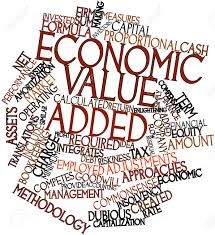 A major gift caseload is not just a bunch of donors who meet a certain giving or capacity criteria.
A major gift caseload is not just a bunch of donors who meet a certain giving or capacity criteria.
It is true that current giving and capacity play into the selection of a caseload pool, from which you should qualify out those donors who actually want to connect.
It is also true that your caseload will have donors of different economic quality, which is why you should be tiering your caseload so you know where to spend your time.
All of this is true.
But when you get up at the 10,000-foot level and look down on it, a caseload is made up of three groups of donors – what I would call the three economic elements of a caseload:
- The core donors – These are donors whom you have qualified and with whom you have a good mutual relationship. They are engaged, involved and contributing at expected levels to your organization. They make up anywhere from 85-88% of your caseload.
- The transformational givers – These are the 1-3 donors that you have identified in your caseload who can give transformational gifts. They haven’t done it yet, but they could. And you are on a course, which may take a year or two, to make that happen. These donors make up 2% of your caseload, maybe less.
- The new donors – Then there are the new donors. This is the cohort of donors who come from a group you qualify one or two times a year, to replace the donors on your caseload whom you move out. Those departing donors have either changed their minds about a relationship with you, they’ve had some life circumstance that has changed the giving relationship with you, or they have simply gone away with no explanation. When you originally qualified them you thought the relationship would work out. It didn’t. So now you have to replace them. Also in this departing group of donors are those donors who will be displaced on the caseload because higher-value donors have presented themselves in your donor pipeline. Think of it this way. You and your fellow MGOs each have only 150 donor “slots” available at a time. You must fill each slot with those donors of the highest economic value. This reality will force you to replace donors on your caseload for no other reason than that they have a lesser economic value than the new donors who have shown up. This group of donors will make up around 10% of your caseload EVERY year.
Be sure to manage your caseload so that you are on track to manage these three economic elements of your caseload. As you are reading this, you might be saying: “Hey Richard, I thought you said this major gift thing was not about the money. Why are you approaching a caseload mix on a purely economic basis?”
Here’s the reason.
Remember that there are two dynamics in major gift caseload management:
- The donor dynamic – this is about fulfilling the interests and passions of donors. It is solely focused on how you can serve the donor. This is more about service than it is about money. In fact, the money follows the service.
- The organization dynamic – this is about fulfilling your contract to the organization you work for. You have to deliver economic value. You are being paid to raise money, and you must be cost-effective in doing that. You cannot allow an “economically non-productive donor” to occupy any of your 150 “donor slots.” Each donor must deliver economic value greater than the cost to manage them.
These two dynamics seem to be in opposition. They aren’t. Your forward-facing work toward the donor is about helping the donor make a difference in the world via your organization. You do that while you are delivering economic value to your organization.
Think about all of this and make sure you are properly managing all three groups of donors in your caseload. When you do this right, you will be doing the right thing for your donors AND for the organization.
Richard





0 Comments